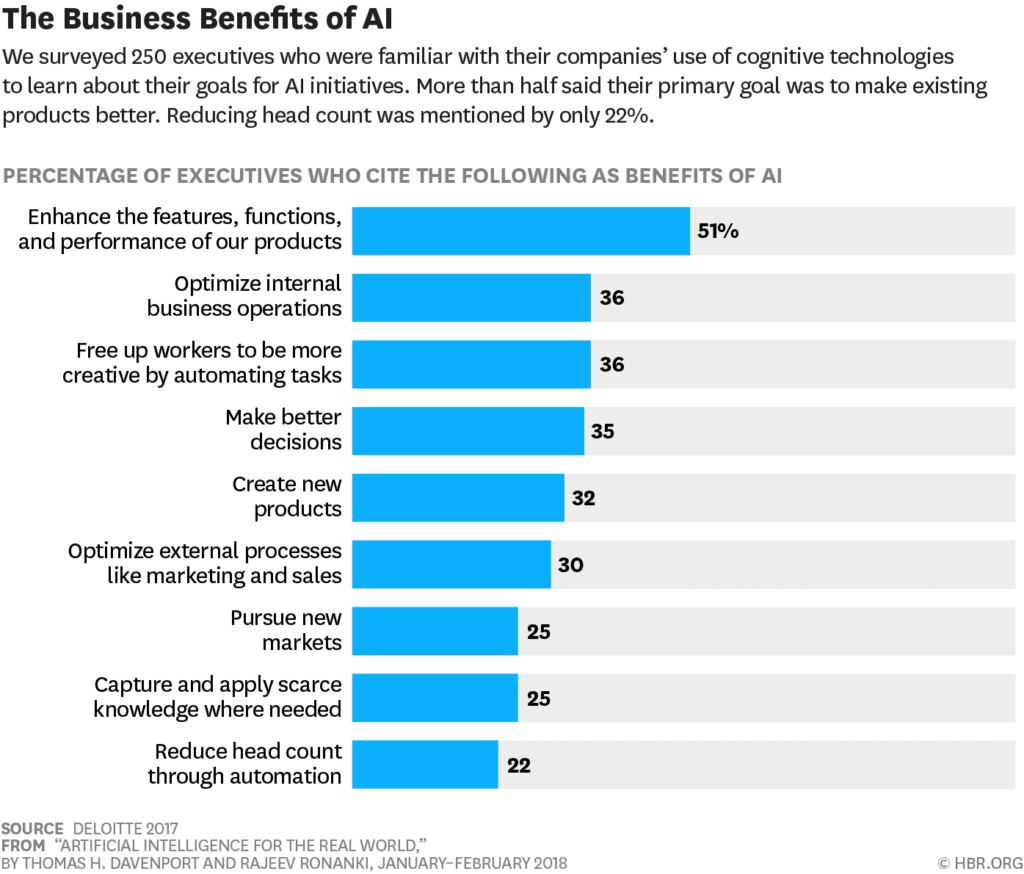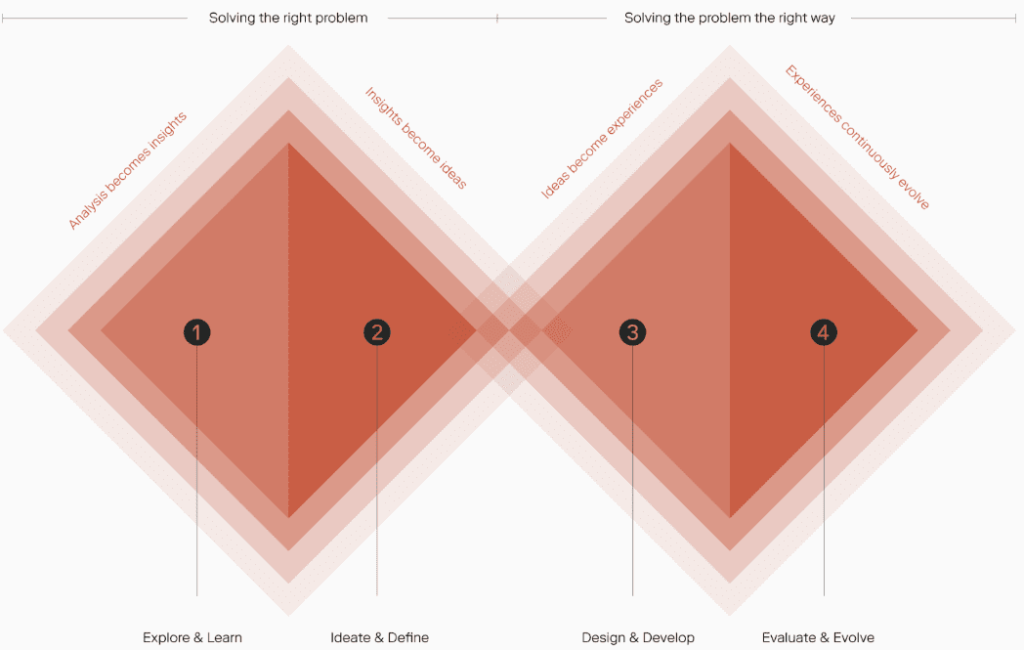Artificial Intelligence (AI) technology has come a long way in recent years. Nearly every industry is planning to integrate AI solutions in their existing business processes. Several industries have leveraged the powers of AI for higher efficiency, better coordination between departments and improved productivity.
In fact, the entire business domain is mesmerized by the prospective benefits of AI for business implications.
Benefits of AI for Business

Source: Deloitte, 2017
Despite the potential benefits and vocal advocacy, not many businesses are using AI for product development, at present. Apart from leaving a few tech firms and startups, there is hardly any movement in the field of AI-powered product development.
So, how to accelerate the pace of product development using artificial intelligence. The answer lies in a strategic framework that includes the identification of product development opportunities and executing the product development plan.
Identifying AI application opportunities
The growing interest in AI is not paving the way for real-life industry applications. While AI technology is getting better with each passing day, companies are reluctant (or unaware) about the powers of AI for product development.
There are several examples of AI tech availability and use case which are not being used on a large scale. AI can be used for signature verification and identification to minimize forgeries in financial markets, but the solution is being used only by a handful of financial firms in the world.
The problem is not in the development but the eagerness of entrepreneurs. The onus of identifying opportunities lies with business firms, who are busy focusing on operational aspects. Instead of trying to find problems to solve, the focus should be on approaching AI with a human-centric contextual basis. Where humans get stuck in the operational processes and how AI can be used as a tool for product development and enhancing operational efficiency?
Leveraging Double diamond framework for concept validation
When the problem solving or product development process begins with the discovery of user needs, the approach is known to be following the double diamond framework.
Double Diamond Framework for Problem Solving or Product Development

Here the two diamond depict two different things. The first ensures that an organization is focusing on the right problem while the other focuses on solving the problem, the right way.
To find the right problem, one should plan to understand the core user challenges and using these insights to uncover basic ideas. Once the issues are understood, one can use the insights to build and design innovative products (using AI technology) that is validated by real-user data gathered by accounting for user problems.
To illustrate the double diamond approach, let’s categorize all the four steps of the double diamond approach and see how one can use it in real-time.

The approach helps a developer or a firm looking for product development services to understand a user problem, highlight the need for a product, ideate a user-centric solution and leverage existing AI technology to build, design, measure and evolve a cutting-edge product.
Executing the Double Diamond Approach
A dynamic execution strategy is an essential or turnkey success in product development. With the help of the double diamond approach, you will be able to map user requirements and find a way to address user needs.
Once you’ve succeeded in getting hold of user requirements, you can start product development by keeping the following recommendations in mind.
- Start small: To enhance your success prospects, you need to structure the solution in a way that allows you to iterate on the go. You need to create a solution around a core problem, or its subset at first and then increase the complexity of the solution. Cater to a small problem at the beginning and continue nurturing your product with AI as you learn new user issues within the organization.
- Augment, don’t automate always: The goal of AI is not to automate alone but to work in conjunction with human hands, too. Automation should not be your ultimate objective. You should also think of ways to augment your processes by giving humans the power to delegate repetitive tasks to AI.
Handling the Dataset Requirements for Product Development
One of the biggest challenges developers face during AI product development is the non-availability of valuable data. Without an extensive dataset, the project can come to a halt and development can deviate from the basic purpose of solving a user problem. Developers would focus on creating large data sets, developing infrastructure and improving data quality.
Though data is one of the most important parts of AI development and training, it should not come in the way of improving the user experience. Data, model and user experience should work collusively throughout the entire product development process.
Without spending an equal amount of attention and focus on each of the element, issues can emerge during the development of datasets, models and refining them based on user requirements.
Also, your AI-based product should be capable of collecting your own user data to boost the scalability quotient. The greatest example of this approach is autonomous vehicles that use manual override during ‘autopilot’ to learn from real-time data inputs and improve themselves.
So, the focus should not be on collecting upfront data rather create a holistic cycle that gathers data at every step and continuously evolves the AI model.
Wrapping Up
Innovation is the need of the hour for every industry. Artificial intelligence is at the forefront of innovation and can help organizations reinvent the wheel for efficient product development. With assistance from a professional AI development company, firms and industries can effectively utilize a human-centric approach towards product development for greater success.


